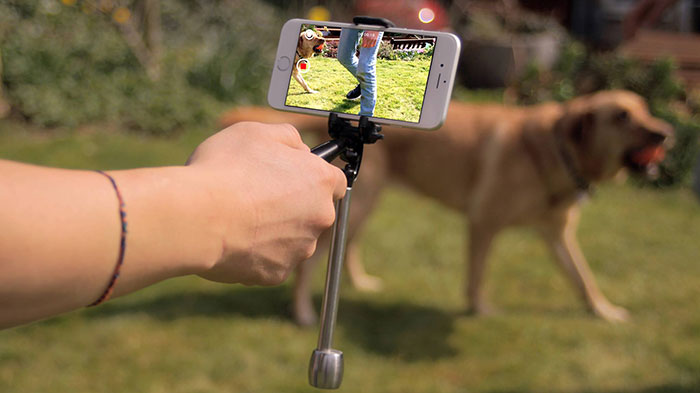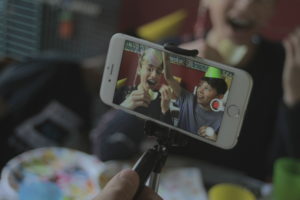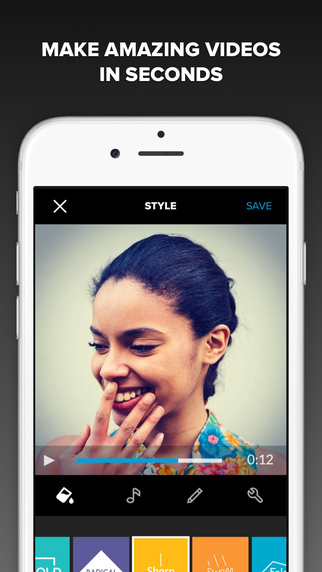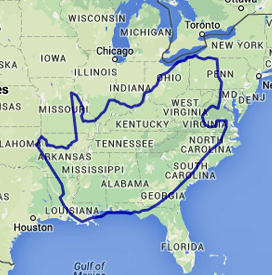
The Pocket Smoovie fits in your pocket and is an easy-to-use, one-handed gimbal for shooting awesome video. They even have an attachment for a GoPro!

This looks a lot like my first cell phone. Two functions: answer calls, make calls. No time, no date, no texting, no contact list. Definitely no camera. Price tag: $400 – and the phone plan was about $200 /mo for the privilege of using it.
Any geek who is geeky enough to follow this blog has a decent smart phone and every smart phone that has come out in the past 5 years has a stellar camera. If you’ve got one of the absolute latest Samsung Androids or the latest iPhone, you can shoot 4K video. Let’s just think about that. Not too many years ago, you’d spend $5K on a stand alone camera that needed tons of stuff to go with it to shoot professional video and it wasn’t even 4K quality.
People balk at the prices of the smart phones today, but I got my first cell phone 24 years ago (they had been out for a long time, but it was the first time they were both affordable and it seemed like a reasonable expenditure for the sake of safety to acquire one) – one of the first ‘candy bar’ phones that was still too big to cram into my deep jeans pocket and it still cost $400. I was THRILLED that it was that ‘affordable.’ It did one thing: it made phone calls. After 5-8 hrs of charging, it had a talk time battery life of about 30 minutes. It made calls. It received calls. It didn’t even tell the time, the date, or have an address book. There was no such thing as texting. It was a phone and you couldn’t even talk on it that much because not only did you not have the battery life to do so, but the phone plans were ridiculously expensive. The batteries drained so quickly, my parents would turn theirs off when not in use and only turn them on after they got a call on their pager. Who misses 1980’s-90s’s technology? Not me! These gadgets have gotten cheaper and cheaper and better and better for what they do and how well they do it. I remember the first time I heard of a phone with a camera on it – it sounded stupid. Why would you even need a camera in there? It had the same quality as the camera used to take pictures of Bigfoot and there was no way to even do anything with the photos you took other than to make them into ‘wallpaper’ on your crappy little phone screen.

Even home movies will be upcycled to better quality using a gimbal like the Smoovie.
Every geek now has far superior filming capability in their pocket that Steven Spielberg did when shooting Close Encounters of the Third Kind. While Android and iOS have built-in software (as do third-party apps for video) to help reduce shake in video, you can still easily identify a hand-held shot vs. one shot with a tripod or other professional mounting device. While there have been gimbal devices on the market for smartphones for a few years, they are ginormous and super pricey. The average hobbyist is never going to plunk down $100 to $1000 for a gizmo to fit a model of phone that will be phased out in 2 years or less.
Enter the Smoovie. The Pocket Smoovie does what its name implies – it fits in your pocket and helps you make smooth movies. I’m backing this project on Kickstarter because it’s super cool, has a patent pending, has a shiny metal object (the stabilizer bar – super awesome), and for what it is and how it works, it’s super duper cheap. Creator Alex Kalogroulis was seeking a mere $14K to get his invention off the ground and he’s already exceeded his funding goal by $100K and there are 7 days left in the Kickstarter campaign. The ingenious design shrinks the size of traditional gimbals using rare-earth magnets as stabilizers (rest easy, geeks – the magnets are not close enough to your phone to cause damage) in the gimbal, so you can shoot video of your kid, pet or yourself with one hand – and without the tell-tale signs of being made by someone on their cell phone whilst in the throes of a low-blood-sugar attack. The jigglies and bouncies are gone. In addition to this, for those of you who may have not heard of the app called Replay, an app I actually paid for it (ahem), and it’s now (literally as of today) been renamed Quik as it has been bought out by GoPro. Replay (ahem – Quik) is an app that will make your snippets of your cat burying its poo in the litter box into movie magic with very little effort. And while I paid for the full version of Replay (and admittedly have already gotten my money’s worth from the app), it is now free. With Quik on your phone AND using a gimbal like the Smoovie, there is no reason why you cannot make amazing clips of your dog, your kid or a butterfly on a flower in moments. Seriously – check out the app, and once you’re socks are blown completely off while your shoes are still on, think about backing this Kickstarter. Kalogroulis believes he’ll be able to ship these out in June, so you’ll theoretically get your bargain gimbal in plenty of time for beautiful summer cinematography. The app is available for iPhone and for Android.
Just 7 days remain on this amazing deal, after which, prices will rise on subsequent purchases. Getting in on this deal costs far less than most phone cases and will make the video of your kid’s ice cream falling on the cone that much more awesome when you share it on Facebook!
You can follow the Kickstarter project here, or visit the Smoovie website, follow them on Twitter, or like them on Facebook.




